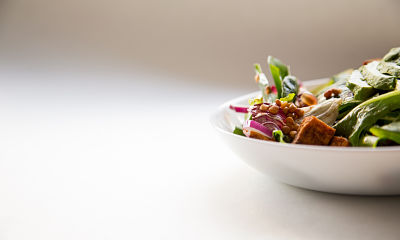 Before getting started, please take some time to review the website to understand what our goal and make sure it aligns with yours. Note you are responsible for your health and one of the results that we expect to produce is a reduction in insulin. Therefore if you have diabetes with either Type 1 or 2, please consult your doctor and make sure you can adjust any medicine as needed due to insulin and glucose reduction.
Before getting started, please take some time to review the website to understand what our goal and make sure it aligns with yours. Note you are responsible for your health and one of the results that we expect to produce is a reduction in insulin. Therefore if you have diabetes with either Type 1 or 2, please consult your doctor and make sure you can adjust any medicine as needed due to insulin and glucose reduction.
My Journey of Getting Started
My journey started when my son, Alex, gave me The Ketogenic Cookbook: Nutritious Low-Carb, High-Fat Paleo Meals to Heal Your Body by Jimmy Moore and Maria Emmerich. I then began to research to understand what exactly is ketogenic and ketosis. Once I realized the possibility to help my health and avoid Alzheimer’s and dementia I knew I wanted to try this way of eating.
I started by stopping consuming drinks with sugar (Gatorade, orange juice, Starbucks hot chocolate, and apple juice) and major carbohydrates; specifically pasta, bread, rice, potatoes, and french fries. Cutting back took some time, but I started immediately at home but when on the move it took more time to stop eating sandwiches.
I then started eating some of the meals in the cookbook. I started eating a breakfast that included:
- butter in the pan
- bacon
- 3 eggs
- cheese
- Arugula
- And topped with some basil.
Beginning to feel good
I started experiencing differences, one of the first changes was I did not feel bloated, always full. Then I felt satiated where I did not want to eat between meals or want to grab something as I walked through the kitchen. The other difference was mental clarity and more energy.
I am not a cook, yet I can follow directions. Inspired I planned a few recipes based on those recipes that included ingredients that I liked. Copied the page in the book and then determine the additional ingredients and went to the store. The meals tasted great and felt full, not wanting to eat dessert or snake later. That was a very different experience. I knew things were different when I could walk by a chocolate chip cookie and not feel compelled to take one because I was full.
Then the inflammation in my ankles and toes went away, and I began losing weight. At that point, I committed to this way of eating.
Gentle Start
I found most people start slow. It a change and most people have a negative view of diets. It is different as we have been eating many carbs for a long time. So it easy to keep doing what you always have done. However, what I can tell you is that I enjoy my food more now, feel better, and have lost weight. It not that I can not eat a piece of cake or have a bit of bread from time to time. What I will say, is I feel much better eating this way no mid-day energy drops and it great to lose weight. I have lost 26+ pounds.
Step 1: Take a few minutes and decide what would you like to accomplish/
- Weight loss
- Feel better – reduce inflammation/joint pain
- Reverse diabetes
- Sleep better
- Be more alert
Step 2: Take a few measurements
- Measure your weight
- Measure your body fat (built-in function in many scales)
- Measure your waist/ hips
- Figure out your adult BMI (20 Years+) – Click here
- Figure out your child or teen BMI (2 to 19) – Click here
Step 3: Choose to eliminate high sugar products from your diet. Take your time here, try it out and see how you feel.
- Sugary drinks (hot or cold)
- Processed foods
- Bread, Pasta, Rice, French Fries, potatoes.
- High sugar desserts
Step 4: Focus on low carb, medium protein, and good fats as you eliminate the above carbs. If you like bacon and eggs, try what I have described above. Here are some better quality choices:
- Butter
- Avocados
- higher-fat protein foods (grass-fed meat and poultry)
- Fish (Salmon, sardines, mackerel) and shellfish
- eggs
- Cheese if possible
- Nuts & Seeds (almonds, flaxseeds, pecans, macadamia nuts, walnuts,
- Extra Virgin Olive Oil, Coconut Oil, Avocado Oil
- Vegetables (broccoli, cauliflower, Kale, Arugula, spaghetti squash, zucchini
- Plain Greek Yogurt low on carbs
- Olives
- Unsweetened tea and coffee
- Dark Chocolate (70% cacao or greater and 100% Cocoa powder – both organic)
It is important to include more sodium (quality sea salt) in your diet. I add some salt to my meals and during fasting, I put some granules under my tongue once or twice a day.
Step 5- Begin making low carb – high-fat meals.
- Start with DietDoctor.com for finding meals. Start making some meals. Once you taste them you will be very surprised, they tasted good and are very satisfying. I not a cook, but I can follow directions. You will be glad you did.
- Low-carb Zoodles Bolognese
- Butter-fried broccoli – my kids eat these all up
Jumping In
If you are clear that you are going to do this for at least three months and want to be able to understand how food impacts your glucose/insulin levels, I would suggest the following:
- Define your objectives, see the gentle start step 1
- Define your starting point, see the gentle start step 2
- Getting a blood monitor that allows you to test for both glucose and ketones (see Tools) at different times.
- Review the other steps in Gentle Start
Give yourself some time to get fat adapted. It takes a few weeks, but you will begin to feel changes, one of the first indication was dry mouth.
Once you start to feel good and if you are having trouble getting into ketosis (see definition of nutritional ketosis), then start tracking your diet with an app (See apps). If you are not getting into ketosis, then your glucose is not low enough. I had a problem initially because I was still consuming too much protein. Once I changed that by a little bit, my ketone levels went from 0.2 up to .08 mmol/L.
Questions
If you have questions, jump on the next call and ask your question or use the contact us to ask your question.
